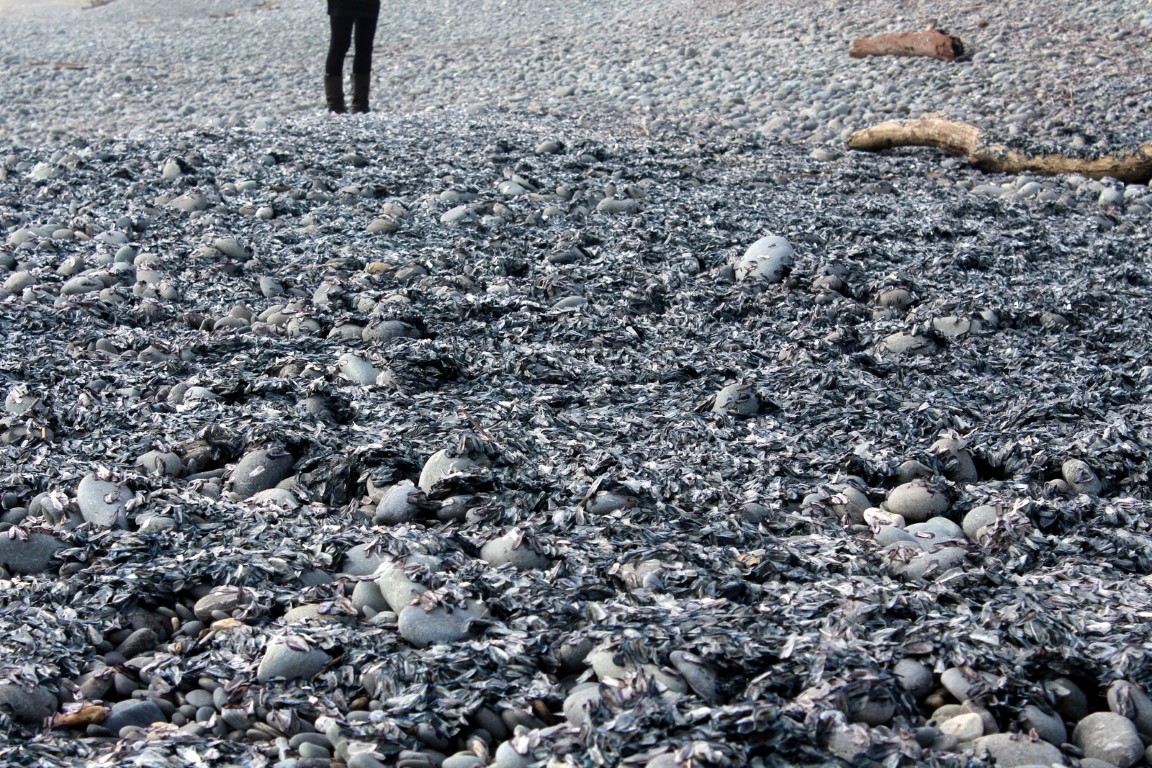
Tens of thousands of by-the-wind sailors, or Velella, first appeared on Blaketown beach last Thursday. By Friday, staff and visitors to Mitre 10 and Greymouth Hospital were left wondering where the stench was coming from. The smell from the rotting mass eased over the weekend.
The Greymouth stranding made news on the BBC and major newspapers in the United Kingdom. It now seems the Greymouth event is part of a much larger mass stranding.
More turned up at Makara, west of Wellington, yesterday: "You are talking millions," Haydon Miller told news website Stuff.
Others were spotted en masse at Pukerua Bay, on the Kapiti Coast, as well as Taranaki. Just over a week ago, a large number washed up at Cable Bay, Nelson, and a few days later also at Farewell Spit.
Department of Conservation marine expert Don Neale also received a report of more at Punakaiki two weeks ago, while last week DOC worker Robyn Langridge found piles of them on a Punakaiki beach, from Burke Road almost as far as Canoe Creek, on and off in patches.
"I haven't seen this many wash up before," Ms Langridge said.
She stopped to investigate a bad smell at Seventeen Mile bluff on Friday, "... and saw a line of older clear skeletons (all the blue had gone off them) along the tide line".
Niwa emeritus researcher Dr Dennis Gordon said today the first mass stranding of by-the-wind sailors was recorded on the North Island west coast in 2006.
"I'm not sure anyone can point to one particular cause."
It was probably a result of the waves, tides, winds and currents.
While the Velella had a little sail on their backs, their powers of propulsion were weak.
Dr Gordon said there was no harm to humans. If someone handled lots of them they may get some contact dermatitis.
The 2006 mass stranding was first reported at Makara and Boom Rock, and they two day later Paraparaumu. Scientists estimated 100 million Velella were washed up on just one beach.
That was followed by Northland, Waikato and Southland, so apparently the whole of New Zealand was affected, according to a science paper by John E.C. Flux
By-the-wind sailors are related to jellyfish and 'bluebottles'.












